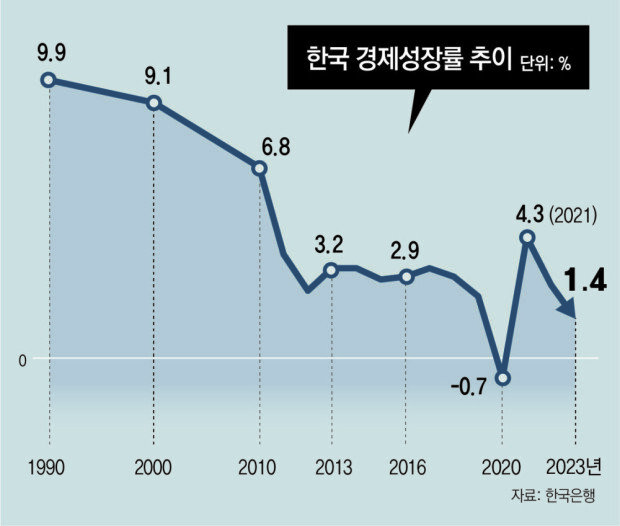Korea's potential growth expected to drop to 1% range this year
Korea's potential growth expected to drop to 1% range this year
Posted October. 24, 2023 08:27,
Updated October. 24, 2023 08:27

The Organization for Economic Cooperation and Development (OECD) has forecasted a further decline in Korea's potential growth rate, expected to reach 1.7% next year after dipping to the 1% range for the first time this year. This projected growth rate of 1.7% for the upcoming year falls short of that of the United States despite the U.S. having a higher level of economic maturity and a significantly larger economy. Reports suggest that structural factors such as low productivity, declining birth rates, and an aging population undermine the Korean economy's fundamental strength.
As per data provided by the Bank of Korea to Rep. Kang Jun-hyun of the Democratic Party of Korea, a member of the National Assembly's Planning and Finance Committee, on Monday, the OECD has projected Korea's potential growth for this year and the following year at 1.9% and 1.7%, respectively. This marks the first instance in which Korea's potential growth rate has dipped below 2% in the OECD's projections. The potential growth rate denotes the maximum attainable growth rate without triggering inflation by fully utilizing all production factors, including labor and capital. The fact that the potential growth rate has now fallen to the 1% range indicates that the nation has entered a full-fledged era of low economic growth.
As Korea's potential growth rate continues its descent, the U.S. growth rate is anticipated to increase from 1.8% this year to 1.9% next year, surpassing Korea's. According to OECD statistics since 2001, this marks the first instance where Korea's potential growth rate has fallen beneath that of the G7 nations.
dhlee@donga.com







